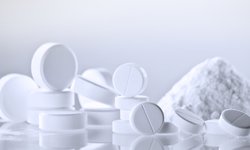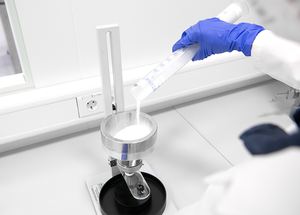Scientific papers
Capping is a common manufacturing issue observed in tablets, with a tendency to affect biconvex tablets more than their flat-faced counterparts. One contributing factor may be the generation of higher residual die-wall pressure during the unloading phase. However, conflicting findings have been reported on this matter. In this study, we investigated the variation of die-wall pressure during the compaction of biconvex tablets through experimental methods and finite element method (FEM) modeling, comparing the results with those of flat-faced tablets. Both experimental and numerical findings revealed that the compression of biconvex tablets led to a lower maximum die-wall pressure and a higher residual die-wall pressure compared to flat-faced tablets. Additionally, both approaches demonstrated a temporary rise in die-wall pressure towards the end of the unloading phase for biconvex tablets. FEM analysis indicated that this phenomenon resulted from a gradual loss of contact between the punch and the tablet, starting from the sides towards the center. This intricate unloading behavior contributes to the temporary increase in die-wall pressure and the emergence of shear stress between the convex part and the land of the tablet, potentially explaining the capping susceptibility of biconvex tablets.

Comments
No comments posted yet.
Add a comment















